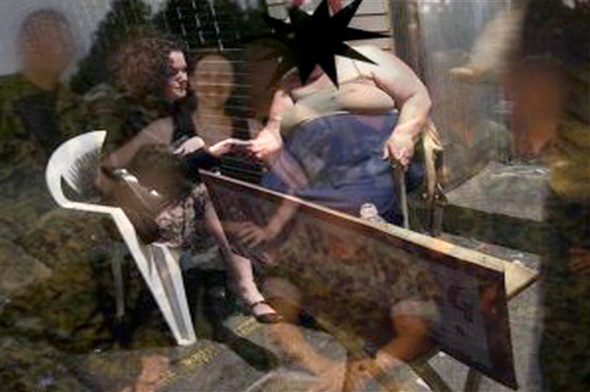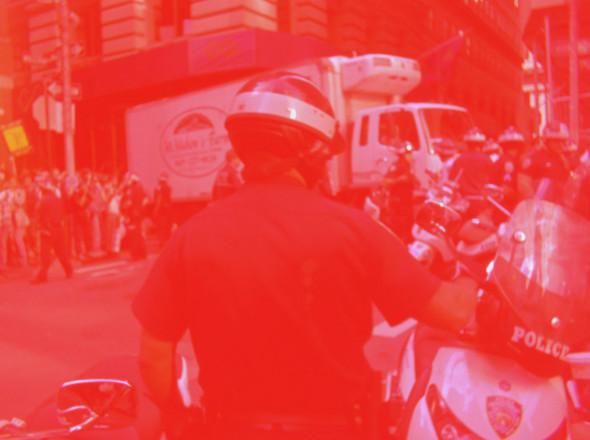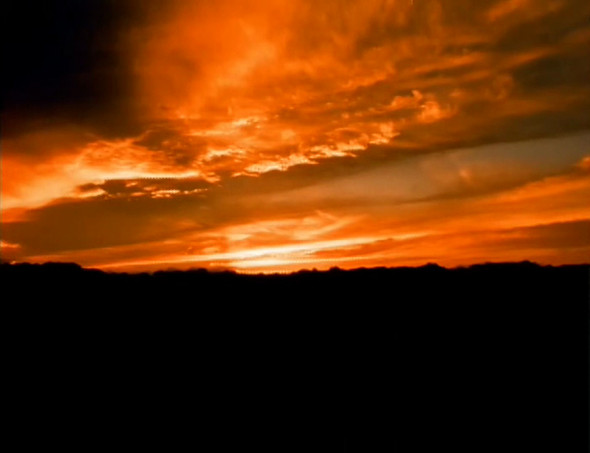
From Copy and Past (2013)
Filmmaker Jason Livingston places a man in front of a camera in order to lead the audience in a game of charades. As he eagerly pantomimes the chosen word with increasing exasperation but an unshakeable smile, we forget for a moment that this is an impossible prospect.
“I have a huge amount of faith in odd efforts to communicate a range of interior processes and dialogue”, Livingston explained to the UnionDocs audience after “The Rebuilt Environment”, his first solo program in New York City.
There is no greater monument to that faith in communication than his film Under Foot & Overstory (2005), for which the implausible game of charades is featured as an intermission. Throughout the film, Livingston uses audio to document the painstaking lengths of cooperation and the limits of human language at a committee meeting to draft a mission statement to preserve a local park. The audio doesn’t appear to cut any corners. We feel like we are hearing every exchange over the placement of punctuation, and the competitive wordsmithing of each phrase. Should the statement express the merits of solitude and contemplation? Can the word “natural” really be applied to a piece of land that is preserved? Should the mission statement acknowledge the spiritual benefits of the land? We too stifle a groan when a committee member requests “one more reading”.
Meanwhile, Livingston gives us a visual tour of the park. The claustrophobic audio of a seemingly endless meeting strikes sharp contrast with a journey under open skies and leaves. Among Livingston’s most prominent concerns is this questioning of the assumed relationship between image and sound, and it works to a stunning effect in this piece.
The evening consisted of eight works in all, ranging from recontextualized found vacation footage in The Two Boys (1999) to “a post-apocalyptic promise of animal repopulation” in Acid Reign (2010). Throughout these films, Livingston attempts to move beyond the obstacle of the human body into what he describes as “the pure communion between souls”, often stopping to linger on the processes of communication and performance that bog us down along the way.

endep 50 price From Richard Matte (2013)
“The Rebuilt Environment” began with what could be considered the most primal example of this obstacle. In Pills Richard Matte (a video work in progress), a matte layer obscures the identity of two men who can be clearly heard engaging in various sex acts. When one of the men reveals that he has never had sex with another man before, we are taken out of the bodily act itself and begin to question the man’s motives for this resulting documentation. We ask ourselves: is he experiencing physical pleasure or performing it? Is the performance for our benefit or for the benefit of his partner? When his partner asks him to clarify what he wants mid-act, the initial bravado of the performance subsides as he delivers a stilted response in an attempt to bridge the divides of physical sensation, verbal instruction, and another man’s body.
Of course, it’s not only the human body that creates obstacles. In Copy and Past (another video work in progress), bodies are both divided by and connected through technology, as Livingston turns to the world of online matchmaking sites. Text from these sites’ profiles are rearranged through an anagram algorithm. The resulting gibberish is further processed through the voices of a male and female singer, whose syrupy vocals Livingston employs to reflect the earnestness of the original writer’s intent. Meanwhile, the images, which are also taken from the website but modified to preserve anonymity, remind us of the inane performative and curatorial elements of constructing an online identity.

From #RUSHES (2012)
cheap flexisyn
A work’s medium can also facilitate connection. Livingston resists the prevailing ethos of “livestreaming, DSLR, and immediate uploading” by using a 16mm camera to capture the atmosphere of Occupy Wall Street in the ironically hash-tagged #RUSHES (2013). Through this medium, it’s easy to forget that we are in the modern age until we are faced with the other cameras documenting the events. They are abundant and of an entirely different species than the lens through which we gaze, and that makes all the difference. A silent, slow motion shot of a protester being arrested by police—a variety of shot seen countless of times on shaky YouTube channels—becomes uncommonly tense as we meditate on the bulging of neck muscles and how bodies can communicate resistance beyond words.
The silence of #RUSHES is particularly powerful, and Livingston experiments with encouraging the audience to talk amongst themselves during the film’s showing. As one audience member noted, while sound often calls attention to what’s happening beyond the camera’s frame, the silence allows us to concentrate on the image in front of us or, in this case, the conversation around us. The experiment had mixed results. Although conceptually it gets to the heart of the movement’s foundation of in-person dialogue, it also encourages the kind of multitasking that distracts from true engagement in anything at all.

From Under Foot & Overstory (2005)
At the conclusion of Under Foot & Overstory, we watch as the committee’s brochure is sent to press. Livingston brings us to an overlook while informing us through text that developers have bought the land from which the camera now stands. We observe the setting sun as we are reminded that “soon only a handful of private landowners will see this view”, before a hand covers the lens, obscuring it from us. The film ends with a pan between two trails. The one we follow ends at a clearing we assume has been prepared for suburban development, as the camera looks down to the ground beneath the filmmaker’s feet at the intersection of dirt and cement.
In the wake of the park’s development, we can’t help but wonder if Livingston’s faith in communication is misplaced. We certainly can’t feign surprise that a committee’s brochure, even with all its carefully finessed language, failed to mobilize the necessary people to prevent the encroachment. Livingston allows us to dwell on words, to become invested in their usage despite what we suspect will be their inevitable failure. He allows us to experiment with idealism before crashing us down to the feeble reality of our efforts. But still, like Livingston, we keep trying, chasing that pure communion between souls despite our inescapable limitations.





